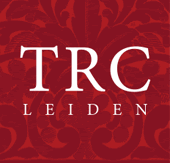A continuous fascination with exotic and unusual textiles with different textures, colours and designs has for milleniia stimulated the trade in cloth and garments between Asia and Europe. This exchange began thousands of years ago and is still active today.
The most famous trade routes are the so-called ‘Silk Roads’, which stretched from China to the eastern Mediterranean, by land and by sea. This series of routes was used from about the 3rd century BC to the 14th century AD.
One of the main items carried along the Silk Roads were the silk textiles that were coveted by the rich and caused anxieties about ‘conspicuous consumption’ among the Romans. Silk is both valuable and portable, and makes an ideal medium for trade and exchange.
It should not be thought that objects travelled in one direction only: Persian textiles moved to the east along the routes to China, and influenced Chinese designs and weaving techniques. And although considerable attention in literature has focussed on the land routes going from east to west and vice versa, there were many trade routes that went from north to south, and south to north, and routes that went by sea around the coast of India to North Africa.
Not surprisingly, Asian-inspired motifs appeared on woven and printed textiles produced in Europe, some of which are direct copies of imports, others of which were ‘fantasy’ re-imaginings of the ‘exotic East’. These included Chinese, Indian, Persian as well as Ottoman imagery.
A wide range of textiles printed with Oriental motifs, for example, were popular in Europe in the late 18th century, and especially in the 19th century. Some of these found their way into Dutch regional dress, notably the chintz-based outfits worn by women in Hindelopen (Friesland), and the chest panels worn by girls and women from the island of Marken, Noord-Holland.
A parallel exchange took place in ceramic designs, with Delft wares imitating Chinese designs and China-made ceramics imitating European and Middle Eastern motifs.


